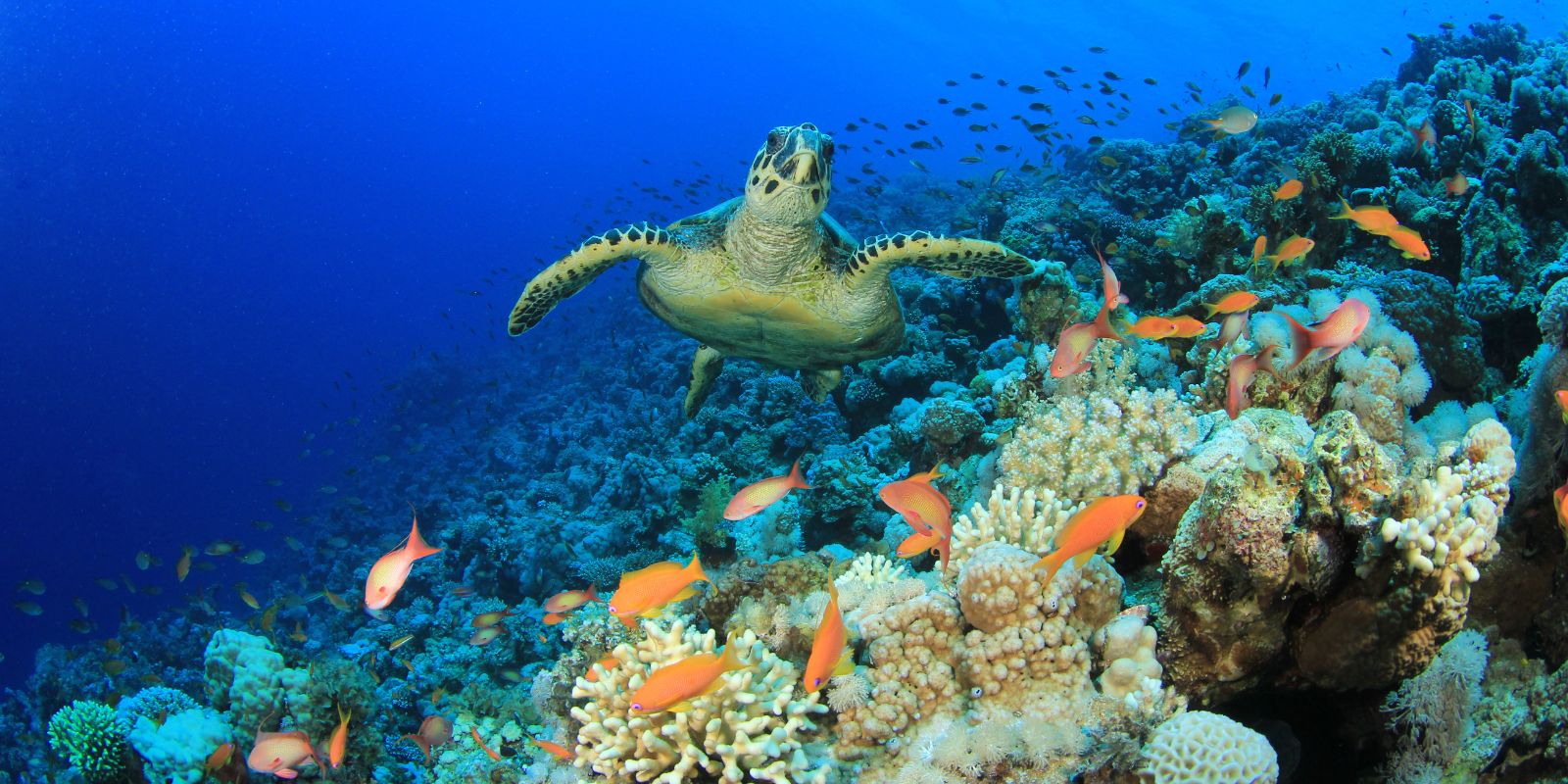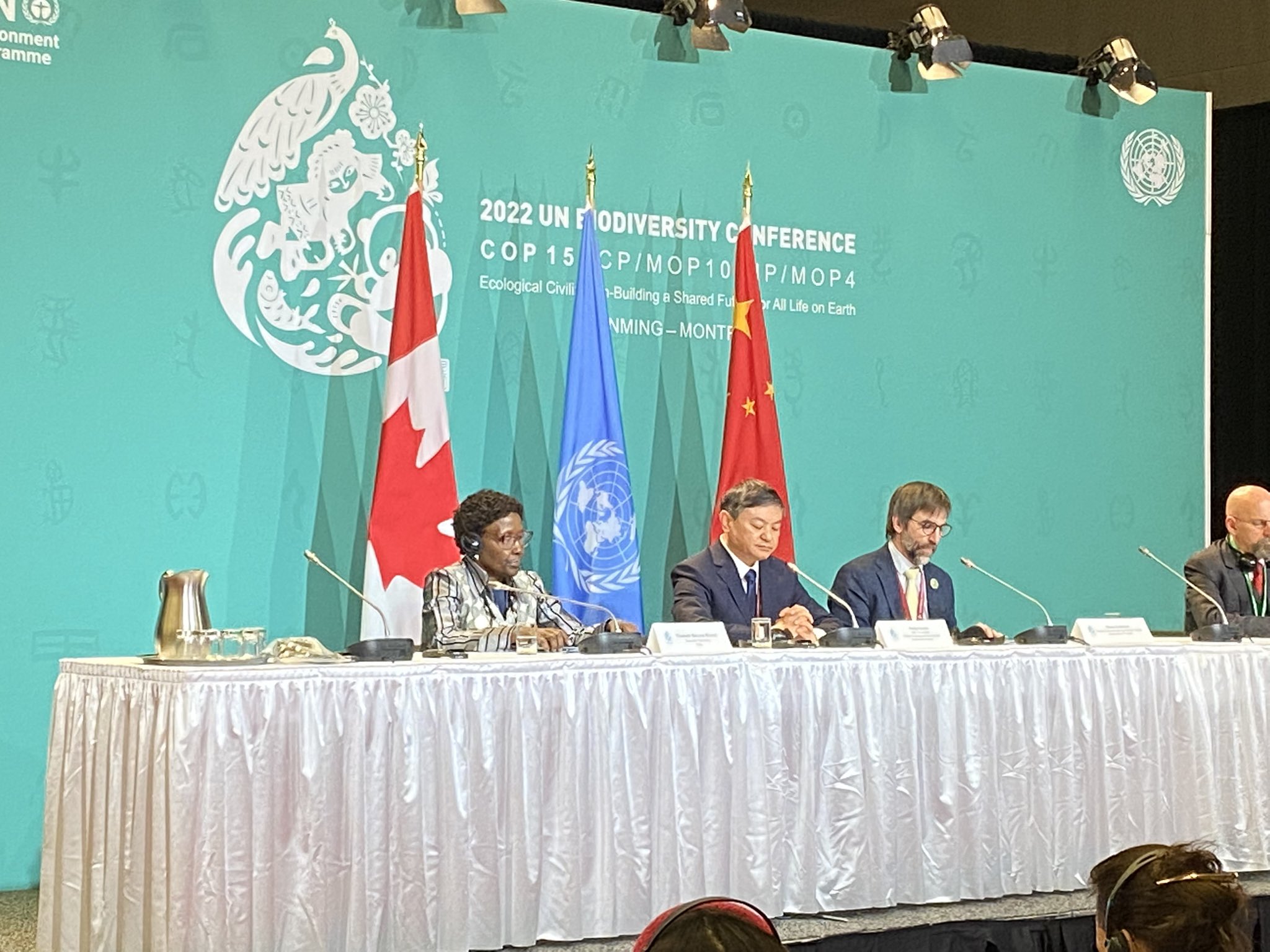Has COP15 delivered for biodiversity?
19 December 2022
HAS COP15 DELIVERED FOR BIODIVERSITY?
Born Free’s International Policy Specialist Adeline Lerambert, and Head of Policy Dr Mark Jones, report on the outcomes of the global biodiversity meeting that has taken place in Canada.

The world’s leaders, Environment Ministers and thousands of people representing all strands of society have been gathered in the Canadian city of Montreal over the past two weeks to finalise a new global deal for nature, the so-called Kunming-Montreal Global Biodiversity Framework.

Born Free’s Head of Policy, Dr Mark Jones.
The meeting, dubbed ‘COP15’, which has been chaired by the government of China and hosted by Canada, was the culmination of three years of intense talks between governments under the auspices of the United Nations Convention on Biological Diversity.
The negotiators have spent well over fifty hours in Montreal reviewing and negotiating every word of the text, the final version of which finally received the seal of approval in the early hours of 19th December 2022. But does the agreement represent the ‘transformative change’ the world has been anticipating? Will it prove to be the catalyst for halting and reversing the catastrophic decline in nature caused by our destructive activities?
Responding to the adoption of the framework, Born Free’s International Policy Specialist Adeline Lerambert said:
“In the final analysis, while the Global Biodiversity Framework by no means contains everything we would have wanted to see, it does represent a recognition by the global community that wildlife is in dire crisis, and that we need to seriously change our relationship with nature for its sake and for our own.

Born Free’s International Policy Specialist, Adeline Lerambert.
“Our advocacy efforts over the past three years and during the conference itself, alongside those of the like-minded organisations and individuals with which we work, have helped ensure the inclusion of many of our key priorities for reducing wildlife exploitation and trade and protecting animal (and by extension human) health and well-being, albeit with less emphasis on the need for bold and urgent action than we would have liked. At the very least, the framework provides us with a set of goals and targets against which we can hold governments to account.”
In order to gain the consensus required under the UN Convention’s rules, politics has inevitably intervened, compromises have been struck, and some aspects of the text are vague or weak as a result. The process by which progress towards achieving the objectives of the agreement will be assessed is also far from comprehensive and will require further rounds of negotiations leading up to COP16 in Turkey in two years’ time.
Key issues of contention have included how and by whom biodiversity protection and recovery should be funded, and how the benefits arising from biodiversity and genetic resources can be equitably shared between regions, countries and communities. Nevertheless, the 196 governments that are party to the Convention have agreed on some positive steps for nature, wildlife and people.
Born Free’s Head of Policy Dr Mark Jones added:
“Whether the framework will prove to be the catalyst that enables the Convention to achieve its vision of ‘living in harmony with nature’ by 2050 will depend on how committed governments across the world prove to be to its comprehensive and robust application. At Born Free we will continue to do all we can to persuade governments to implement, and indeed go well beyond, the measures they have agreed here in Montreal to halt and reverse nature’s decline. The future of all life on earth, including our own, depends on it.”
The measures that governments have agreed to implement are contained within four long-term goals for 2050, and 23 action-oriented targets to be initiated straight away and completed by 2030.

Reversing Nature’s Decline
The agreement includes targets to effectively conserve at least 30% of terrestrial, inland water, coastal and marine ecosystems, improve degraded systems, and bring the loss of areas of high importance for biodiversity to ‘close to zero’, by 2030. These key targets have been retained despite efforts by some countries to water them down. There is a focus on reducing the harmful effects of climate change, ocean acidification and pollution on biodiversity, including a target to reduce the risks from pesticides and harmful chemicals by half. Governments have agreed to value nature and its contributions to people across policies, regulations, planning and development processes, and to utilise biodiversity sustainably and within planetary boundaries.
Businesses are to be encouraged to monitor, disclose and progressively reduce their impacts on nature, and to provide consumers with information enabling them to make nature-positive choices, as well as reducing overconsumption and waste. The agreement also sets a goal of progressively closing the funding gap for nature by US$700 billion annually, through reducing financial incentives that harm nature by US$500 billion, and by mobilising US$200 billion of additional funding for nature-positive actions, although the exact mechanisms and timelines by which this is to be achieved, and the proportion that developed countries will need to stump up to help developing countries, have been hotly debated.
Protecting Wild Species
For wildlife species, the agreement aims to halt human-induced extinctions, reduce extinction risk by a factor of 10 by 2050, and conserve and recover species (particularly threatened species) by 2030 while maintaining their genetic diversity. The effective management of human-wildlife interactions to minimize conflict and promote coexistence between people and wildlife is a key target.
The conservation and sustainable use of wildlife is to be mainstreamed. Importantly, governments have also committed to ensuring that by 2030 the use, harvesting and trade of wild species is sustainable, safe and legal. There is a focus on controlling and preventing the spread of invasive species, which are identified as a major cause of biodiversity loss, by at least 50%.
Enhancing Human, Animal, and Environmental Health and Well-Being
The framework seeks the fair and equitable sharing of monetary and non-monetary benefits from nature, with a strong focus on meeting the needs of developing countries. The development of nature-based solutions and ecosystem-based approaches to issues affecting both people and wildlife features heavily. The positive benefits of nature for people’s physical and mental health are recognised and encouraged, and the framework promotes the adoption of the One Health approach which recognises the interconnectedness of the health of people, wildlife and the environment. Measures are to be introduced to reduce the risk of pathogen spillover from wildlife exploitation, a major risk factor for the emergence of pandemic diseases.
The framework also seeks to increase collaboration between all stakeholders, ensure gender equality, empower women, girls, youth and persons with disabilities, recognise the rights and customs of indigenous peoples and local communities, and protect those who defend environmental human rights.
You can find the final agreed text of the Kunming-Montreal Global Biodiversity Framework by clicking the button below:
Kunming-Montreal Global Biodiversity Framework
Photo Credit: © richcarey (Getty Images Pro)
